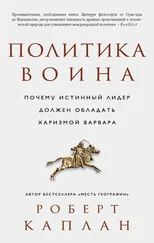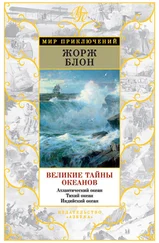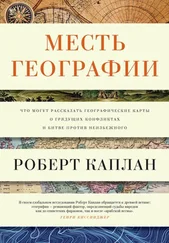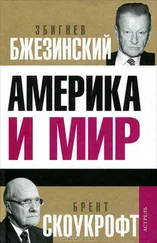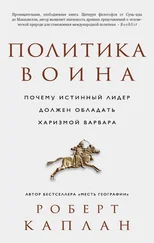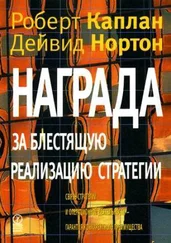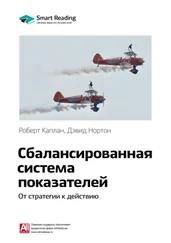2. Ibid. P. 35.
3. Richard M. Eaton . The Rise of Islam and the Bengal Frontier, 1204–1760. Berkeley: University of California Press, 1993. P. 159, 160.
4. Richards . Mughal Empire. P. 239, 242.
5. Sugata Bose . A Hundred Horizons: The Indian Ocean in the Age of Global Empire. Cambridge, MA: Harvard University Press, 2006. P. 56.
6. William Dalrymple . City of Djinns: A Year in Delhi. L.: HarperCollins, 1993. P. 82, 83.
7. George N. Curzon . Frontiers: The Romanes Lecture 1907. 1907; reprint, Boston: Elibron Classics, 2006. P. 57, 58.
8. Lord Curzon of Kedleston . The Place of India in the Empire. L.: John Murray, 1909. P. 12.
9. Parag Khanna and C. Raja Mohan . Getting India Right // Policy Review. 2006. February/March.
10 . Stephen P. Cohen . India: Emerging Power. Washington, DC: Brookings, 2001. P. 55.
11. James R. Holmes , Andrew C. Winner , and Toshi Yoshihara . Indian Naval Strategy in the 21st Century. L.: Routledge, 2009. P. 131.
12. Holmes and Yoshihara . China and the United States in the Indian Ocean: An Emerging Strategic Triangle? // Naval War College Review. 2008. Summer. From Ming’s articles «The Indian Navy Energetically Steps Toward the High Seas» and «The Malacca Dilemma and the Chinese Navy’s Strategic Choices».
13. Holmes and Yoshihara . China and the United States in the Indian Ocean.
14. Geoffrey Kemp . The East Moves West // National Interest. 2006. Summer.
15. Heather Timmons and Somini Sengupta . Building a Modern Arsenal in India // New York Times. 2007. Aug. 31.
16. Daniel Twining. The New Great Game // Weekly Standard. 2006. Dec. 25.
17. Greg Sheridan . East Meets West // National Interest. 2006. November / December.
18. Holmes , Winner , and Toshihara . Indian Naval Strategy in the 21st Century. P. 142.
19. Defense Industry Daily, June 6, 2005.
20. Mohan Malik . Energy Flows and Maritime Rivalries in the Indian Ocean Region. Honolulu: Asia-Pacific Center for Security Studies, 2008.
21. Adam Wolfe , Yevgeny Bendersky , and Federico Bordonaro // Power and Interest News Report. 2005. July 20.
22. Khanna and Mohan . Getting India Right.
23. Edward Luce , In Spite of the Gods: The Strange Rise of Modern India. N. Y.: Doubleday, 2007. P. 287.
24. Ibid. P. 275.
25. Twining . New Great Game.
26. Stanley Weiss . India: The Incredible and the Vulnerable // International Herald Tribune. 2008. Apr. 23.
27. Khanna and Mohan . Getting India Right.
28. Sunil Khilnani . India as a Bridging Power // The Foreign Policy Centre, 2005.
29. Harsh V. Pant . A Rising India’s Search for a Foreign Policy // Orbis. 2009. Spring.
Глава 8. Бангладеш: борьба за прозябание
1. Alan Villiers . Monsoon Seas: The Story of the Indian Ocean. N. Y.: McGraw Hill, 1952. P. 5.
2. Interview with Jay Gulledge, senior scientist, Pew Center on Global Climate Change, 2009.
3. Richard M. Eaton . The Rise of Islam and the Bengal Frontier, 1204–1760. Berkeley: University of California Press, 1993. P. 306.
4. Samuel P. Huntington . Political Order in Changing Societies. New Haven, CT: Yale University Press, 1968. P. 1, 9, 47.
5. Eaton . Rise of Islam and the Bengal Frontier. P. 235.
6. Камоэнс . Лузиады. Песнь десятая: 121.
7. Suniti Bhushan Qanungo . A History of Chittagong. Chittagong, Bangladesh: Signet. 1988, P. 468.
8. Thant Myint-U . The River of Lost Footsteps: A Personal History of Burma. N. Y.: Farrar, Straus and Giroux, 2006. P. 72.
9. Ibid. P. 110.
Глава 9. Калькутта: очередной город мирового значения
1. John Keay . The Honourable Company: A History of the English East India Company. L.: HarperCollins, 1991. P. 220, 272.
2. Камоэнс . Лузиады. Песнь седьмая: 20.
3. Richard M. Eaton . The Rise of Islam and the Bengal Frontier, 1204–1760. Berkeley: University of California Press, 1993. P. 12, 13, 19, 20, 61, 62, 313.
4. Geoffrey Moorhouse . Calcutta: The City Revealed. London: Weidenfeld and Nicolson, 1971. P. 93.
5. Ibid. P. 18.
6. David Gilmour . Curzon: Imperial Statesman. N. Y.: Farrar, Straus and Giroux, 1994. P. 145.
7. Dominique Lapierre . The City of Joy. N. Y.: Doubleday, 1985.
8. William T. Vollmann . Poor People. N. Y.: Ecco, 2007. P. xiv, 111, 123, 124, 239.
9. Madeleine Biardeau . India, transl. F. Carter. L.: Vista, 1960. P. 65, 73.
10. Moorhouse . Calcutta. P. 128.
11. Sunil Gangopadhyay . Those Days, transl. by Aruna Chakravarti. N. Y.: Penguin, 1981, 1997. P. 581.
12. Basil Lubbock . The Opium Clippers. Boston: Lauriat, 1933. P. 13, 14, 16, 17, 28. См.: C. R. Boxer . The Dutch Seaborne Empire, 1600–1800. L.: Hutchinson, 1965. P. 228.
13. Simon and Rupert Winchester . Calcutta. Oakland, CA: Lonely Planet, 2004. P. 32.
14. Keay . Honourable Company. P. 193.
15. Термин «объективно-исторические силы» ( vast impersonal forces ) ввел T. С. Элиот. См. эссе Исайи Берлина «Историческая неизбежность» (Historical Inevitability), впервые прочитанное на лекции в 1953 г. и опубликованное в его книге «Четыре эссе о свободе»: Isaiah Berlin . Four Essays on Liberty. L.: Oxford University Press, 1969.
16. Thomas Babington Macaulay . Essay on Lord Clive, edited with notes and an introduction by Preston C. Farrar. 1840; reprint, N. Y.: Longmans, Green, 1910. P. xxx, 3, 16, 17.
17. Keay . Honourable Company. P. 289.
18. Ibid. P. 281.
19. Macaulay . Essay on Lord Clive. P. 22.
20. Ibid. P. 24, 25.
21. Keay . Honourable Company. P. 290.
22. Ibid. P. 36, 37.
23. Moorhouse . Calcutta. P. 25, 26.
24. Macaulay . Essay on Lord Clive. P. 39.
25. Ibid. P. 40.
26. Ibid. P. 41.
27. Macaulay . Essay on Lord Clive. P. 43.
28. Ibid. P. 44.
29. Ibid. P. 45.
30. Ibid. P. 45, 46.
31. Keay . Honourable Company. P. 315.
32. Ibid. P. 51.
33. Macaulay . Essay on Lord Clive. P. 59, 60.
34. Ibid. P. 61.
35. Macaulay . Essay on Lord Clive. P. 97.
36. Harvey . Clive. P. 375, 376.
37. Nick Robins . The Corporation That Changed the World: How the East India Company Shaped the Modern Multinational. Hyderabad, India: Orient Longman, 2006. P. 168.
38. Ibid. P. 103.
Глава 10. Стратегия и прекрасное
1. David Gilmour . Curzon: Imperial Statesman. New York: Farrar, Straus and Giroux, 1994. P. 181.
2. C. Raja Mohan . Crossing the Rubicon: The Shaping of India’s New Foreign Policy. N. Y.: Penguin, 2003. P. 204.
3. Ibid.
4. George Friedman . The Geopolitics of India: A Shifting, Self-Contained World // Stratford. 2008. December.
5. Shashi Tharoor . Nehru: The Invention of India. N. Y.: Arcade, 2003. P. 185.
6. Simon and Rupert Winchester . Calcutta Oakland, CA: Lonely Planet, 2004. P. 78.
Читать дальше
Конец ознакомительного отрывка
Купить книгу



